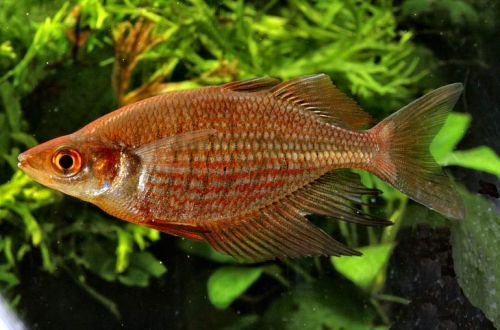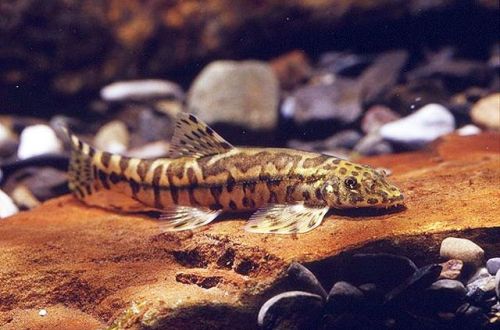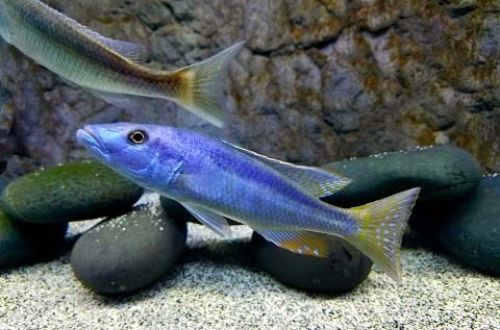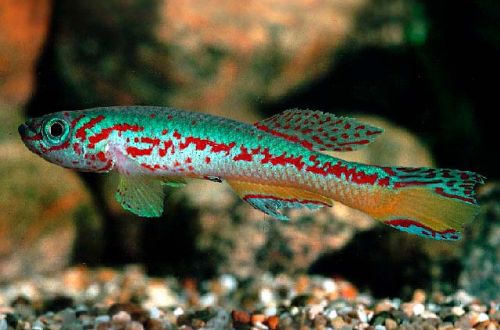
Rainbow Sepik
Rainbow Sepik or Glossolepis green-blue, scientific name Glossolepis multisquamata, belongs to the family Melanotaeniidae (Rainbows). The fish received one of its names from the area where it was first discovered – the Sepik River in the northeast of the island of Papua New Guinea. Bright, mobile and peaceful fish. It is easy to keep and can be recommended to the beginner aquarist.

Contents
Habitat
Endemic to Papua New Guinea. The habitat is limited to the swampy basin of the Mamberamo River (Sepik is one of the tributaries). Inhabits numerous rivers, lakes and swamps. Unlike most other rainbowfish, it prefers well-lit reservoirs with dense aquatic vegetation with slightly acidic water.
Brief information:
- The volume of the aquarium – from 150 liters.
- Temperature – 24-30°C
- Value pH — 4.8–6.8
- Water hardness – 2–6 dGH)
- Substrate type – any
- Lighting – bright
- Brackish water – no
- Water movement – light or moderate
- The size of the fish is about 12 cm.
- Food – any food
- Temperament – peaceful
- Content in a group of 6-8 individuals
Description
Adults grow up to 12 cm. The body is high, but flat with an arched back and a pointed head. Coloration ranges from olive green to silver with a predominance of red or orange underparts.
Food
The basis of the daily diet should be protein-rich foods. The best choice is a combination of live, frozen and dry freeze-dried food. They feed in the upper and middle layers of water.
Maintenance and care, arrangement of the aquarium
The optimal volume of the aquarium for a group of 5-6 fish starts from 150-200 liters. The fish are active swimmers and can jump out of the water. When choosing a design, it is necessary to provide free spaces for swimming, and the cover will prevent accidental jumping out. Usually, floating plants serve as a natural obstacle for jumping, but in this case, they should be abandoned in order to prevent excessive shading – Rainbow Sepik loves high light. The fish spends most of its time in the middle and upper layers of water, so the design of the lower tier does not matter.
The main attention in the content should be given to the composition of the water. It is necessary to provide soft, slightly acidic water and prevent the accumulation of organic waste (feed residues, excrement) that can increase the concentration of products of the nitrogen cycle to dangerous values. It is important to regularly maintain the aquarium and installed equipment. In particular, weekly replace part of the water with fresh water in the amount of 20-30% of the volume in the presence of a productive filtration system. If the filter is not present, the volume of water to be replaced is increased to 50%. the newly added water should have similar pH and dGH values.
Behavior and Compatibility
Prefers to be in the company of relatives. It is recommended to purchase a group of 6-8 individuals. Males during the spawning period begin to pursue females, so it is desirable that their number be less than females. In addition, they show territorial behavior, it is generally worth keeping only one male in a small aquarium. Compatible with most other fish of comparable size.
Breeding / breeding
In favorable conditions, spawning occurs regularly. Fish lay their eggs among dense thickets of plants; special artificial spawning vegetation can be used. Spawning is extended over time, since the iris lay eggs in portions over several days. In this regard, fry also appear in batches. Parental instincts are not developed. Although the fish are not inclined to eat their own offspring, the laying may suffer. Feed juveniles with special food, Artemia nauplii, crushed dry flakes.
Fish diseases
If the habitat does not meet the requirements, the fish receive poor-quality food or are attacked by neighbors in the aquarium, then the likelihood of a disease increases many times over. Irises are most susceptible to skin diseases in the form of parasitic invasions, bacterial infections. Read more about symptoms and treatments in the Aquarium Fish Diseases section.





